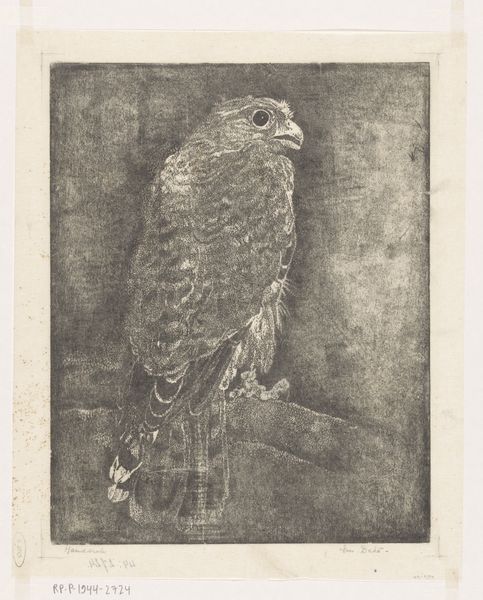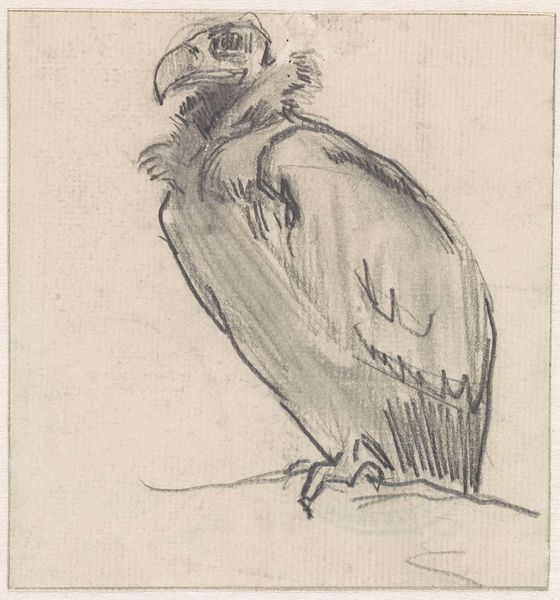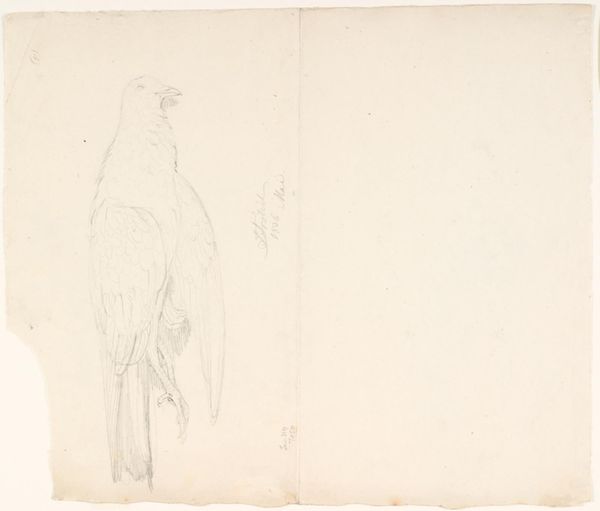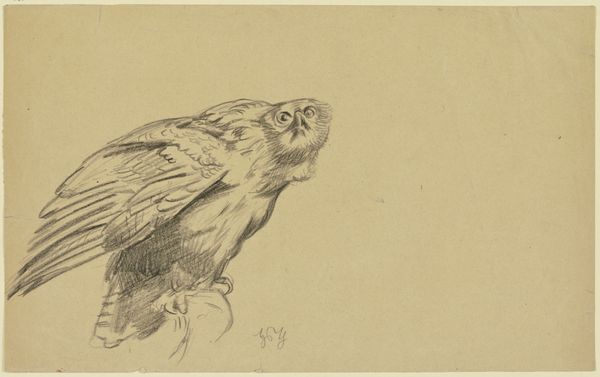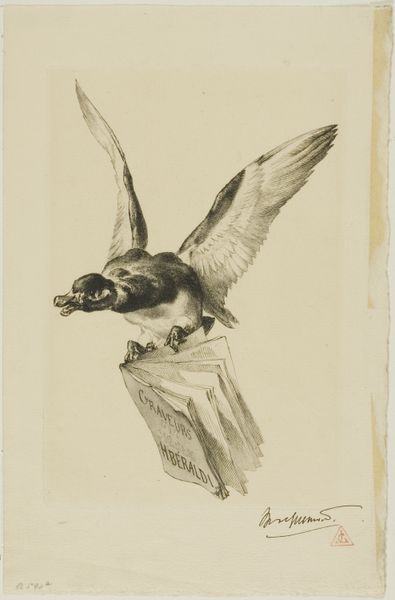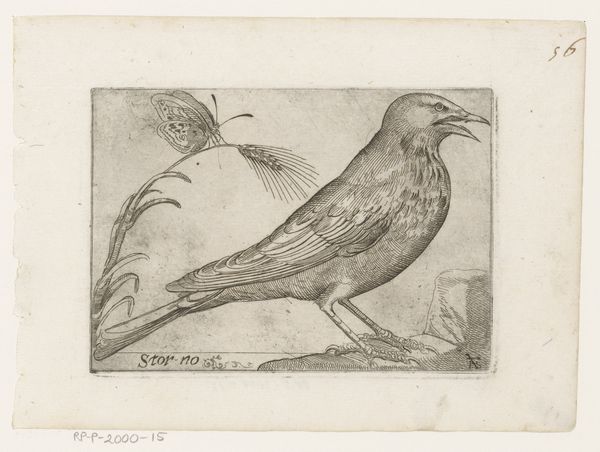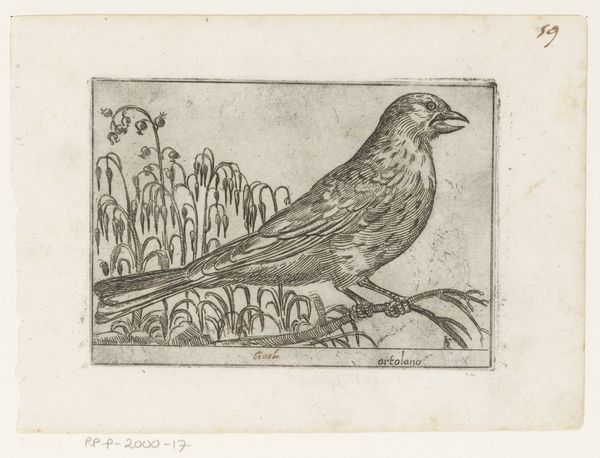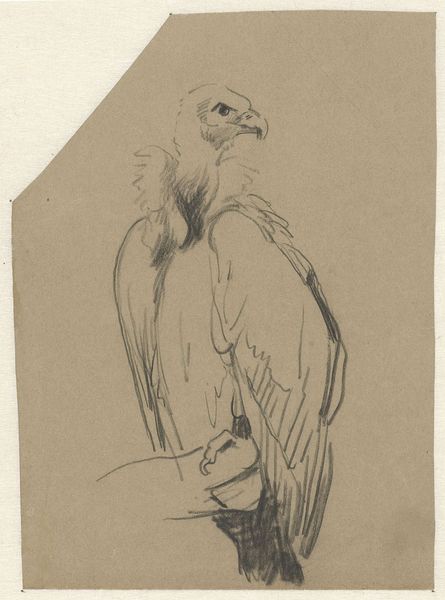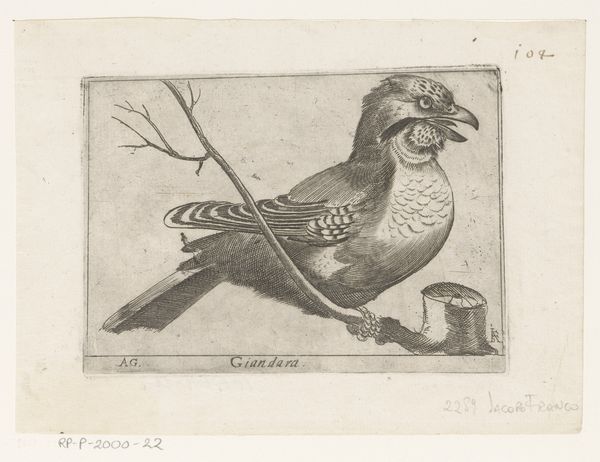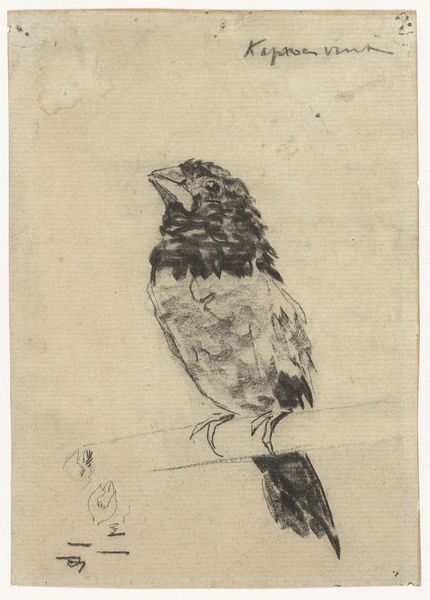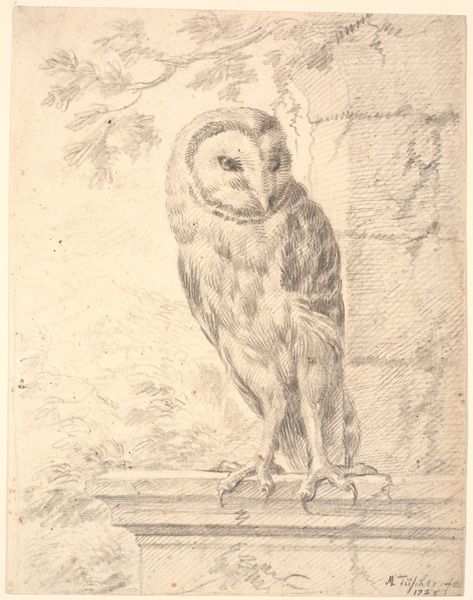
Illustration til "Lykkens Kalosker" i H.C. Andersen, "Eventyr og Historier", Bind 1 1870 - 1873
0:00
0:00
drawing, print, ink
#
drawing
# print
#
pencil sketch
#
figuration
#
ink
Dimensions: 75 mm (height) x 76 mm (width) (bladmaal)
H.P. Hansen crafted this illustration for Hans Christian Andersen’s "The Galoshes of Fortune" using pen and ink. Our gaze is immediately drawn to the parrot, perched prominently, while a smaller bird sits in a cage behind it. Birds, throughout history, have been potent symbols. The caged bird often represents the soul or a longing for freedom, a motif echoed in countless cultural narratives. Consider, for instance, the dove, a symbol of peace across cultures, or the raven, often linked to darker, prophetic mysteries. The parrot, however, introduces a layer of complexity. It's not merely a symbol of freedom or the soul but perhaps a mimicry of human folly, a reflection of our own desires and delusions. The contrast between the confined bird and the comparatively free parrot brings forth the psychological tension between longing and superficial satisfaction. These symbols reappear and evolve, reflecting the ever-changing human experience. This echoes the cyclical nature of symbols, continually resurfacing in different guises.
Comments
No comments
Be the first to comment and join the conversation on the ultimate creative platform.

